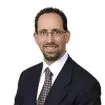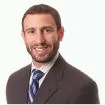On February 9, 2021, the Sonoma County, California Board of Supervisors enacted an urgency ordinance that, effective immediately, expands coverage under its emergency paid sick leave (EPSL) ordinance while clarifying and/or amending leave and notice requirements. The same day, the San Francisco, California Board of Supervisors adopted, and sent to the mayor, an ordinance that extends its expiring EPSL ordinance for an additional 60 days, prospectively exempts certain non-profits from coverage, and prospectively narrows instances in which some employees may use leave. The next day, February 10, Los Angeles Mayor Eric Garcetti revised an order requiring employers to provide COVID-19 Supplemental Paid Sick Leave (SPSL) by broadening employee coverage and, as a result, changing how employers must calculate the amount of SPSL they provide employees.1
Sonoma County: On February 2, the Board revived the ordinance and extended it through June 30, 2021. In its February 9 vote, the Board made additional changes to the ordinance including the following:
Employer Coverage: The ordinance now applies to all employers in the county's unincorporated areas. Previously, coverage was limited to employers with 500 or more U.S. employees.
No New Bank of Leave: The amendments confirm that, notwithstanding the fact that the 2020 ordinance now extends into 2021, EPSL is a one-time benefit, so employers do not need to provide a new bank of leave to employees. This one-time benefit is available to employees of employers the ordinance has always covered, as well as those it now covers but who the federal Families First Coronavirus Response Act (FFCRA) covered previously. Employers can count leave provided to employees under all emergency paid sick leave programs, e.g., the ordinance, the statewide EPSL executive order and/or statutes, the FFCRA, and Cal-OSHA regulations as leave required by the ordinance.
Limited Exception for Health Care Providers & Emergency Responders: Unlike the federal FFCRA, employers of health care providers and emergency responders covered by the ordinance could not elect to exempt those employees from being able to take EPSL. The ordinance now provides a limited exception for these employers. If they have employees who need leave to care for an individual whose senior care provider, school, or childcare provider is closed or is unavailable due to COVID-19, these employers may deny leave if they make a good-faith determination that granting leave would create a staffing shortfall and that their operational needs require them to deny all or some of the requested leave.
Notice / Posting Requirement: The amendments require that, within three days of publication of the ordinance, employers provide notice to employees of their rights under the ordinance in a manner calculated to reach all employees, including posting a notice in English and Spanish in the workplace, on any intranet or app-based platform and/or via email. These requirements mirror pre-existing notice-posting requirements. The county has now made available notices employers can use to meet their obligations, which describe the law as amended, so employers will need to redistribute and post the updated notices.
San Francisco: Originally, the Board of Supervisors simply proposed reenacting, for an additional 60 days, the Public Health Emergency Leave Ordinance (PHELO), which was set to expire on February 11, 2021. The version going to the mayor - who has 10 days from receipt to sign, veto, or return unsigned the measure - however, includes additional changes that will apply prospectively if the ordinance is retroactively reenacted effective February 11.
Employer Coverage: Since April 2020, PHELO has applied to employers with 500 or more U.S. employees. Once reenacted, it will continue to do so, with one exception. Specifically, going forward, PHELO will not apply to 501(c)(3) non-profit organizations if the majority of their annual revenue is program service revenue that is not unrelated business taxable income under federal law and they do not engage in "healthcare operations," i.e., providing diagnostic and healthcare services and devices including, but not limited to, hospitals, medical clinics, diagnostic testing locations, dentists, pharmacies, blood banks and blood drives, pharmaceutical and biotechnology companies, other healthcare facilities, healthcare suppliers, home healthcare services providers, mental health providers, or any related and/or ancillary healthcare services. Additionally, it includes veterinary care and all healthcare services provided to animals, but excludes fitness and exercise gyms and similar facilities.
Covered Uses: The amendments prospectively remove a controversial PHELO provision that allowed employees to take leave regardless of whether and when they were scheduled to work. Accordingly, employees will only be able to use PHEL if they actually miss work due to a covered reason.
City of Los Angeles: Under the mayor's prior order, an employee had to have been employed between February 3, 2020 and March 4, 2020 to be eligible for SPSL, and amount of leave was based on average hours an employee worked over a two-week period during this time. As a result, employees hired after March 4, 2020 were not entitled to SPSL. The amended order changes those provisions.
Employee Coverage: The revised order provides SPSL benefits to employees employed with the same employer for 60 days, expanding coverage to employees hired on or after March 5, 2020.
SPSL Calculation: The revised order requires employers to calculate the amount of SPSL due employees based on their two-week average over the last 60 days of employment. The revised order does not address, however, whether this standard applies only to employees who the order did not previously cover or, whether it also applies to previously covered employees. If it applies to previously covered employees, employers may need to recalculate the amount of SPSL these employees are eligible to receive.
The revised order does not address when employers must perform this calculation. It is hoped the L.A. Office of Wage Standards issues guidance clarifying this issue. If it does not, employers might consider using the approach the federal FFCRA used: calculate the amount of leave when an employee first requests to use leave.
Retroactive v. Prospective: The revised order, issued on February 10, 2021, does not include text suggesting the revised standards apply retroactively, so, like other COVID-19 related orders, it appears it will apply prospectively.
What About State or Federal Laws? Despite the consistent extension and/or expansion of local EPSL ordinances, the California Legislature has not proposed reinstating or expanding the statewide emergency paid sick leave laws, nor has the governor acted through an executive order to do the same. Additionally, California employers and employers across the country continue to wait to see whether, and if so, how, the federal government might extend or expand the FFCRA.
Footnotes
1 On February 11, the L.A. Office of Wage Standards revised its regulations to align them with changes in the order.
Originally Published by Littler Mendelson, February 2021
The content of this article is intended to provide a general guide to the subject matter. Specialist advice should be sought about your specific circumstances.



